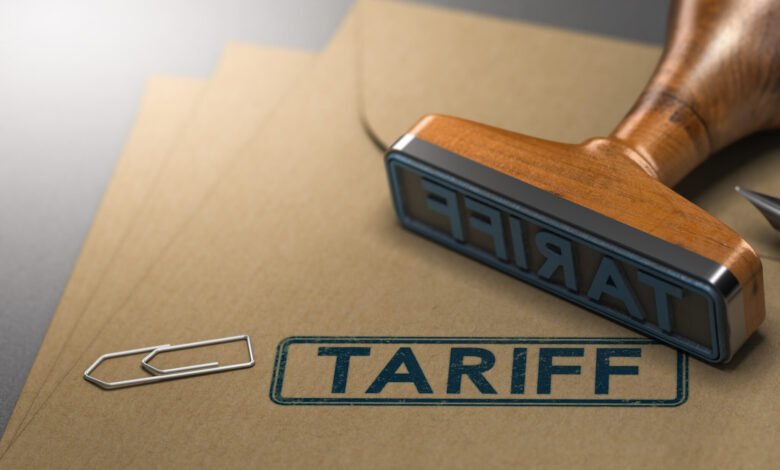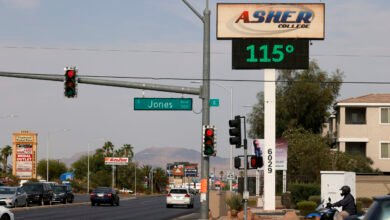Trump’s foolproof plan to reignite inflation • Nevada Current

“It’s not a question of inflation anymore,” Donald Trump said in Las Vegas last weekend.
He’s not wrong.
Inflation – the rate by which prices are going up – was 2.4% in September, the lowest rate it’s been in more than three years.
Consumers of course are still paying prices that are higher than they were before the pandemic. Just because prices aren’t going up like they used to doesn’t mean they’re coming down.
And those higher prices tend to hit Nevadans harder than people in other states. Nevada state government is funded mostly by sales taxes, which makes things more expensive, and the sales tax rate is higher in Nevada than in most states.
But at least prices are no longer rising at anywhere near the pace they were when inflation peaked at 9.1% in June of 2022.
So Trump’s statement is mostly true. It’s not a question of inflation – the rate that prices are rising – anymore.
For now.
It will be a question of skyrocketing inflation again, however, if Trump wins the election and follows through on his promise to impose sweeping tariffs.
(Tariff) Man with a plan
Trump earlier this year proposed across-the-board tariffs – taxes on imported goods — of up to 20% on all imports, along with a 60% tariff on imports from China.
Earlier this week, Trump floated imposing even higher – “horrible,” as he put it – tariffs of as much as 100% or 200%.
Researchers estimate that even Trump’s more modest 20% to 60% tariff proposal will stick households with an average additional annual out-of-pocket expense of about $4,000.
Or as several economists, multiple think tanks, and Kamala Harris call it, a $4,000 tax increase.
That amount could easily be an underestimate. The impacts of tariffs aren’t confined to the targeted industry or product. Tariffs have ripple effects, raising prices and/or weakening product quality in ways the designers of the tariffs never anticipated, and the full scope of added costs to consumers can be hard to itemize.
Think about how the pandemic exposed the interconnectedness and vulnerability of supply chains. The disruptions and lag time it took for supply chains to mend themselves as the economy emerged from the pandemic was one of the largest drivers of the inflation that peaked in 2022.
Snarled supply chains weren’t part of anybody’s economic plan.
Trump’s tariffs, by contrast, would inflict uncertainty, unintended consequences – and higher prices – on supply chains and the economy, on purpose.
Just like Trump did in 2018-19, if on a much smaller scale.
The tariffs imposed then, most of which have been retained by the Biden administration, were substantially smaller in size and scope than the tariffs Trump is promising now.
The estimated cost of those 2018-19 tariffs to U.S. business and consumers more or less match the amount of revenue the tariffs have been generating for the federal government: U.S. households and firms have been paying the federal government about $80 billion a year, thanks to tariffs implemented during the Trump administration.
And to reiterate, those tariffs are very light compared to what Trump is planning now. The right-leaning Tax Foundation estimates that under Trump’s 10% to 60% tariff proposal, the average tariff rate on all imports would be seven times higher than it is now.
Not surprisingly, a preponderance of economists (including 16 Nobel Prize winners) and researchers warn that Trump’s tariff plan would reignite inflation and prompt prices to surge.
U.S. taxes, paid by U.S. taxpayers
Trump, the self-dubbed “Tariff Man,” denies that tariffs are tax increases, and insists the costs of tariffs are borne not by U.S. consumers and U.S companies, but by the foreign country and foreign industries targeted by the tariffs.
He is exactly 100% wrong. Tariffs imposed on imported goods are paid by the U.S. company that imports the goods. The U.S. importer will try to pass as much of the cost as it can on to purchasers, and may end up eating some of the cost itself. Yes, tariffs can and do inflict economic pain on the nations targeted by the tariffs. But the tariff is ultimately going to be paid not by a foreign country or manufacturer, as Trump contends, but by U.S. households and firms.
If it were anyone other than Trump, it would be perplexing to hear someone with purported business acumen who was also a U.S. president repeatedly and falsely assert that foreign countries pay American tariffs and American businesses and consumers don’t.
The prospect that “Tariff Man” doesn’t know how tariffs work can’t be ruled out. But a perhaps likelier explanation, one that fits one of his common behavioral patterns, is he knows he’s wrong and he doesn’t care. The tariff thing is one of his staple economic arguments — it’s campaign comfort food. And it also might please him to watch even supporters who know he’s wrong pretend he’s right, out of their devotion to him and what they may view as the enticing promise of autocracy.
Oh and just by the way…
In an op-ed published in the New York Times a few months ago explaining why Trump is “doing so well” with Nevada voters, Trump supporter and Nevada Republican Gov. Joe Lombardo said “When I took office, Nevada was grappling with the economic hangover of the pandemic.”
Lombardo neglected to note the fact that when he took office he inherited the flushest state budget in Nevada history, and Nevada, like the nation, was emerging from the pandemic economic upheaval far more quickly and robustly than anyone had thought possible just a year earlier, i.e., when Joe Biden took office, all thanks to Biden.
If Trump wins the White House and keeps his extreme tariff promises, voters in Nevada, which always gets hammered the hardest whatever economic trouble hits the country, will yet again suffer miserably as the result of economic chaos created beyond Nevada’s borders and beyond Nevada’s control.
But as we’ve seen this election cycle, when voters are mad about a thing, they blame the person and party that is in office, even if unfairly. If Trump wins and imposes his tariffs, Lombardo may come face to face with that typical voter behavioral pattern two years from now when he’s on the ballot.





